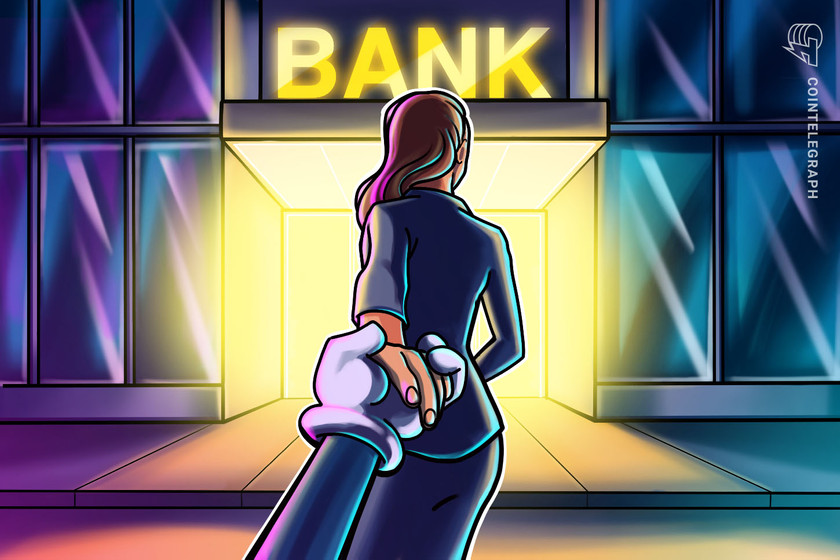Swedish central bankers snipe Bitcoin mining, cite rampant energy use


A report by the Riksbank makes the case for banning Bitcoin mining in Sweden over proof-of-work energy consumption concerns; Bitcoin Twitter was quick to react.
Another day, another environmental attack on proof-of-work (PoW) mining. A report shared by the Swedish central bank argued that energy-intensive Bitcoin (BTC) and cryptocurrency mining should be banned.
The Swedish central bank, known as the Riksbank, is the oldest central bank in the world. In a damning report entitled, “Cryptocurrencies and their impact on financial stability,” the bank had a crack at PoW cryptocurrency mining. PoW mining employs energy-guzzling data centers that solve puzzles to secure blockchains. The report stated:
“Recently, some extraction of crypto assets has been established in northern Sweden, where it consumes as much electricity as 200,000 households do on an annual basis.”
For Knut Svanholm, a Bitcoin author who recently penned “∞/21M,” told Cointelegraph, “A central bank has no business telling people what they can and cannot do with their electricity.”
“If they really cared about the environment, they’d shut their own operation down for good tomorrow morning.”
The paper cites peers at the environmental agency and the Swedish Financial Supervisory Authority, equivalent to the United States Securities and Exchange Commission, in its examination of Bitcoin’s energy use:
“The proof-of-work method, which is used to confirm transactions and extract new cryptocurrencies, should be banned in favor of other, less energy-intensive methods.”
Svanholm has a different take: “Bitcoin mining is guessing a number over and over again. […] As so many other Swedish institutions have done before them, they [the central bank] choose to comment on something that they don’t understand and have no business having even an opinion on.”
The report comes as little surprise, given that banks and governments regularly take aim at PoW energy use. The report also flies in the face of Bitcoin adoption in Sweden. Home to a number of Bitcoin startups, Sweden is advanced in terms of European Bitcoin adoption.
Prominent Swedish Bitcoiners, including Svanholm as well as Christian Ander, the founder of Swedish Bitcoin exchange BTX, were quick to refute the report on Twitter. Svanholm shared a Youtube video that argued that “none of the energy used for Bitcoin mining goes to waste.”
Här är en liten video jag och några kompisar har gjort om ämnet: https://t.co/uz4p5Ap7EC
— knutsvanholm.com ∞/21M (@knutsvanholm) June 10, 2022
Ander called the report “highly inappropriate.” He tweeted:
“Energy consumption must be neutral, production must be regulated. Do not regulate what individuals do with it.”
As the bank’s friends at the International Monetary Fund march onward with a central bank digital currency — as it would use less energy — the figures for Bitcoin mining are stark. In late 2021, Bitcoin took first place as the cleanest industry in the world with its high renewable energy mix. In neighboring Norway, Bitcoin miners use 100% renewable energy, while Bitcoin miners worldwide strive to make the world a better place.
Related: Bitcoin’s real energy use questioned as Ethereum founder criticizes BTC
The proposed ban from the Swedish central bankers also lands concurrently with the publication of a report examining the energy efficiency of crypto transactions . The report stated:
“When Bitcoin Lightning layer is compared to Instant Payment scheme, Bitcoin gains exponentially in scalability and efficiency, proving to be up to a million times more energy efficient per transaction than Instant Payments.”
Bitcoin’s Lightning Network recently hit the 4,000 BTC milestone showing its promise as a payment solution. Lightning payments take place off-chain and use considerably less electricity than the Bitcoin miners that secure the network’s layer 1.
Nonetheless, research from Cambridge Centre for Alternative Finance states that Bitcoin consumes an estimated 15GW of electricity each day. In meme-worthy material, back-of-the-napkin math from one Twitter user claims that clothes driers in the U.S. consume more energy:
(reposting the math here, for ref)
– There are 130M US households
– An avg household uses 12000 KWh / yr (EPA)
– Dryers are 6% of household energy consumption (EPA), which = 720 KWh / yr
– 720 KWh * 130M = 93.6 TWh
– Bitcoin uses 70-120 TWh (estimates vary)^ that’s just the US
— Daniel Ƀrrr (@csuwildcat) February 15, 2021
An Our World in Data report demonstrated that the global sports industry emits three times the emissions of the Bitcoin network. It begs the question, why do central banks continue to attack PoW’s energy usage? And which financial institution will fire the next shot?







